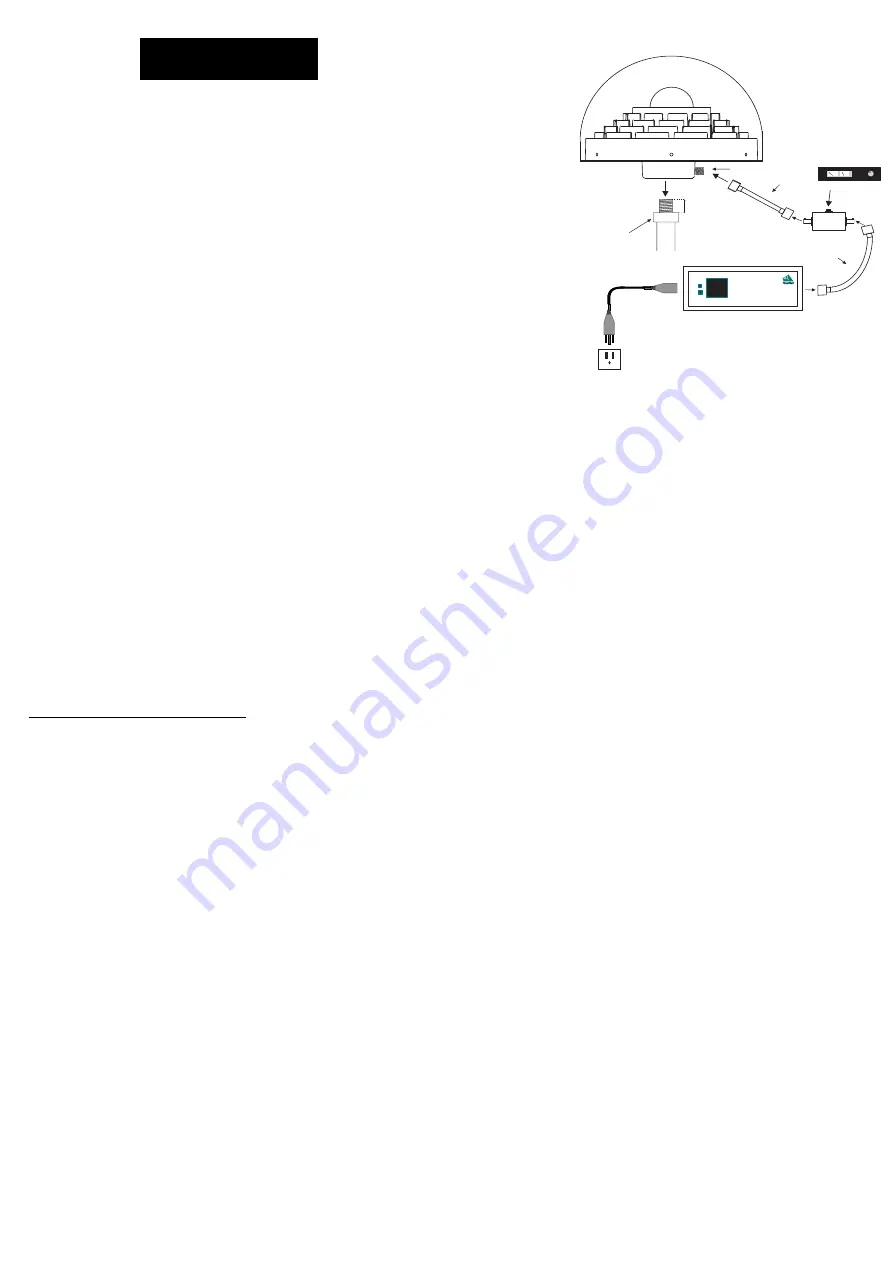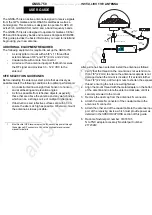
GNSS-750
The GNSS-750 is an active antenna designed to receive signals
from the GPS, Galileo and GLONASS satellites as well as L-
band signals. This antenna is designed to operate for GPS L1/
L2/L2C/L5, GLONASS L1/L2/L3 and L-band frequency bands.
The GNSS-750 is also designed to operate for Galileo L1/E5a/
E5b and E6 frequency bands and receives Compass B1/B2/B3.
This guide provides the basic information you need to install and
begin using your new antenna.
ADDITIONAL EQUIPMENT REQUIRED
The following equipment is required to set up the GNSS-750:
•
A sturdy pillar or mount with a 5/8" x 11 thread that
extends between 3/8" and 7/8" (9 mm and 22 mm)
•
Coaxial cable with a male N connector
•
A device with an antenna input port that both receives
the RF signal and provides 3.3 - 12.0 VDC to the
antenna
1
.
SITE SELECTION GUIDELINES
Before installing the antenna, select a site that as closely as
possible meets the following conditions for optimal performance:
•
An unobstructed line-of-sight from horizon to horizon
and at all bearings and elevation angles.
•
As far as possible from reflective objects, especially
those that are above the antenna and any water bodies,
which can be a strong source of multipath reflections.
•
If obstructions and reflective surfaces are within 30 m,
ensure the site is as high as possible. Otherwise, mount
the antenna as low as possible.
INSTALLING THE ANTENNA
After a site has been selected, install the antenna as follows:
1. Verify that the thread on the mount does not extend more
than 7/8" (22 mm) to ensure the antenna receptacle is not
damaged when the mount is inserted. If it extends further
than 7/8" (22 mm), add two jam nuts to shorten the exposed
thread, ensuring the nuts are well tightened.
2. Align the mount thread with the metal adapter on the bottom
of the antenna and rotate the antenna clockwise until it is
securely screwed to the mount.
3. Remove the dust cap from the antenna’s N connector.
4. Attach the male N connector of the coaxial cable to the
antenna’s N connector.
5. Attach the other end of the coaxial cable to the antenna input
port of the receiving device, which must provide power as
detailed in the
SPECIFICATIONS
section of this guide.
6. Radome NovAtel part number: 01018195
N to TNC adaptor accessory NovAtel part number:
21723240
ANTENNA CARE
The GNSS-750 is designed to withstand the elements, including
rain, snow, and dust. However, to ensure your antenna performs
optimally, keep the top surface and the choke rings of the
antenna clean and brush off any ice and snow. A radome is
recommended. In addition, ensure the N connector remains
clean and dry and replace the dust cap when a cable is not
connected.
ELEVATION GAIN PATTERNS
1.
Most NovAtel GPS receivers provide the necessary power through
their antenna RF connectors. Check the applicable receiver user
manual for details.
USER GUIDE
Antenna Mount
Jam nuts
or flange
5/8 x 11
thread
"
3/8 - 7/8
9 - 22 mm
"
” (
)
N connector
Coaxial
cable
Bias "T"
W AAS Reference Receiver: G - I I
Contrast
Coaxial
cable
LNA DC Power
SPECIFICATIONS
RF
3 dB pass band (typical)
Upper:1525-1612 MHz
Lower:1164-1301 MHz
Out-of-band rejection (typical)
0
∼
900
900
∼
1002.5 MHz
1002.5
∼
1062.5 MHz
1062.5
∼
1102.5 MHz
1370
∼
1465 MHz
1410
∼
1440 MHz
1668
∼
1718.5 MHz
1718.5
∼
1798.5 MHz
1798.5
∼
1900 MHz
1900
∼
3000 MHz
80 dB
70 dB
50 dB
30 dB
30 dB
50 dB
30 dB
50 dB
70 dB
80 dB
Gain at zenith (
θ
= 90°) (min)
+5 dBic
Gain roll-off (zenith to horizon)
10-15 dB
LNA gain (typical)
39
±
3 dB
Polarization
Right-hand circular
Noise figure (typical)
1.5 dB
Differential propagation delay
(maximum)
9 ns
Nominal impedance
50
Ω
VSWR
≤
1.5 : 1
POWER
Input voltage
3.3 - 12 V
Current (typical)
70 mA
PHYSICAL
Diameter
380 mm (14.96
"
)
Weight
7.6 kg (317.47 oz)
Height
200 mm (7.48”)
ENVIRONMENTAL
Operating temperature
-55°C to +85°C (-67°F to +185°F)
Storage temperature
-55°C to +90°C (-67°F to +194°F)
Salt spray
MIL-STD-810F Method 509.4
Ingress protection
IPX6 and IPX7
All manuals and user guides at all-guides.com
all-guides.com




















